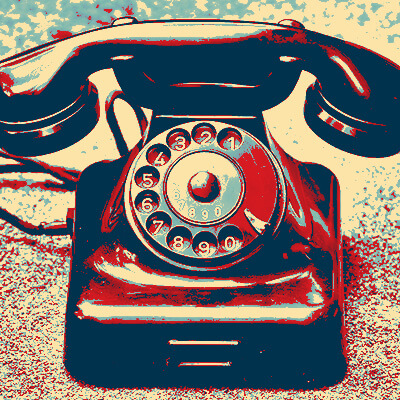I was so pleased to find GroovyTek. Although I am pretty tech savvy in some areas there are others where I need help. GroovyTek has helped me fill in that gap of information. I made an appointment to help me sync my devices and also help me learn how to organize my photos. The trainer was knowledgeable and able to explain things very clearly.
Need Help? Call Us.
877.201.3586
Paying Online

You’ve found the perfect item and now it’s time to pay for it. So how do you make sure your information is secure? Fortunately, there are now multiple options available to safely conduct purchases online.
PayPal
PayPal started in 1998 and became the giant of online payments when it was purchased by eBay in 2002. It now boasts more than 100 million users. All you need to set up an account is an email address. By linking a checking account or credit or debit card, you are able to electronically transfer money. PayPal basically works as a middleman between buyer and seller. One of the benefits is an added level of security as your personal information, whether it be credit card number or bank account, stays with PayPal. You can use this method to send money to businesses or individuals instantly making it a great option for both online shopping and peer-to-peer transactions. Finally, PayPal has an easy-to-navigate dispute process for when things go wrong.
Credit & Debit Cards
The first rule for safe use of a credit card online is to ensure the site you are on is secure. You’ll need to look for “https://” rather than “http://”. The “s” means that the site is encrypted, or that it translates your information into a code. Always log out of the website when you’ve completed your transaction, and make sure your antivirus software is up to date. As a general rule, credit cards are going to have better consumer protections than debit cards, so you may want to review your bank’s policy before your purchase.
Payment Apps
Venmo, Zelle, Cash App, Apple Pay… Welcome to the world of payment apps. These options vary in the details but ultimately they all work similarly: the user registers a credit card or bank account in order to conduct mobile payments for peer-to-peer transactions. Apple Pay allows iPhone and Apple Watch users to conduct transactions between individuals as well as in-store. Fees, processing time, and dispute policies vary, so be sure to read the fine print before you make your choice.
Client Reviews
Outstanding trainers with expertise and a lot of patience at a fair price. I have used them for two years and they have given me a much better understanding of the in's and outs of how to use many aspects of my computer. It is a pleasure to have them come to my home and work on my own computer problems.
Jerry P
GroovyTek did a great job! My trainer was on time, professional and she solved my slow computer. Great job, GroovyTek! I will use your services again.
Marcia F
GroovyTek has helped me, a 65 year old, learn how to do all sorts of things on my computer that I did not know about before. I had no one else to ask, and they have rescued me. It's so great to have a polite, friendly, knowledgeable person come to my house and teach me. What a wonderful service!
Margie C
I think your service is great! I have used it, and I booked 2 sessions for my 83-year old husband who bought himself a new Ipad, but didn't know how to use it. He's been ill, so it was a great help that you came to the house. Thanks for the service.
Susan S
I have always had the best computers that Apple offered, but the problem was that I never knew how to use them. Thanks to my GroovyTek trainer, my tech skills have increased exponentially and I am feeling more competent and confident with each lesson.
John B
I have been very pleased with the IT trainers from GroovyTek who have been to my house. They were very helpful!
Karen B
It is comforting to know if you have technical problems there is a Hands On source to get help. These trainers listen to your problems, find solutions and work with you until you understand the solution, their patience is outstanding. This is a great way to not only solve problems but to learn about the ever-changing world of technology; there are class presentations, small group gatherings or one-on-one in your home with kind, friendly, people.
Ingrid S
We have had several help sessions with a GroovyTek trainer. WE could not be more pleased. My trainer takes all our questions and while answering types up his answers so even after he leaves, we can refer to his notes. I would recommend GroovyTek to any of my friends or family without hesitation. BTW, ALL the employees at this firm are extrememly knowledgeable and friendly.
Tom D
The trainers are so friendly, and helpful. They certainly have lots of patience and knowledge. They make you feel so comfortable asking questions you would not dare ask your family to show you again how to do. They are always welcome in my home, sometimes I hate to see them go!
Debera F
Spectacular people. Knowledgeable, professional, customer focused and easy to work with. I have used their services a couple of times (because I am over 40) and they are great to work with.
Jim H
I had a serious issue with my bank website not being secure. This was a very technical problem. I used the Remote Session option to get help. My GroovyTek trainer kept at it until we finally resolved the issue.
Jeff W
My tech from GoovyTek has been terrific. He is patient, knowledgeable, and explains things really well. I enjoyed learning new tools and features on my smart phone and computer. They have made doing things a lot easier and more enjoyable.
Jennifer H
Dear GroovyTek team, I thank you from the bottom of my heart for this very supportive and beneficial service you provide! I am so grateful!
Loretta J
I had a session with GroovyTek over the phone today. It was extremely helpful to me because I was able to see everything that he was doing on my computer as he was talking. I was then able to follow his actions to do what he was doing as well. What a way to go!









